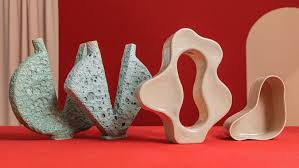To provide the best experiences, we use technologies like cookies to store and/or access device information. Consenting to these technologies will allow us to process data such as browsing behavior or unique IDs on this site. Not consenting or withdrawing consent, may adversely affect certain features and functions.
The technical storage or access is strictly necessary for the legitimate purpose of enabling the use of a specific service explicitly requested by the subscriber or user, or for the sole purpose of carrying out the transmission of a communication over an electronic communications network.
The technical storage or access is necessary for the legitimate purpose of storing preferences that are not requested by the subscriber or user.
The technical storage or access that is used exclusively for statistical purposes.
The technical storage or access that is used exclusively for anonymous statistical purposes. Without a subpoena, voluntary compliance on the part of your Internet Service Provider, or additional records from a third party, information stored or retrieved for this purpose alone cannot usually be used to identify you.
The technical storage or access is required to create user profiles to send advertising, or to track the user on a website or across several websites for similar marketing purposes.
O&ALFA/CLAY
Clay;
Definition; Fine grained, earthy material, plastic when wet and hardens when heated, consisting hydrated silicates of aluminum.
Constituents; -silicon, aluminum, magnesium, potassium, and ion. Terracotta; – Unglazed, reddish brown hard baked clay, often used to make pottery items. It’s fired clay in a permanent irreversible state.
=Clay is a recyclable material, but when fired it becomes permanent and irreversible.
Properties of clay
Uses of clay
-Making bricks, tiles, pots, and sculpture.
Possibilities of clay;
-Cheap material.
-Flexible material, easily manipulated with hands.
-Common material in most swamps in Uganda.
-Recyclable if not fired.
-Permanent material when fired.
Limitations of clay
-Long preparation process (especially for pottery).
-Irreversible if fired.
-Fragile
Clay preparation;
This involves mixing of materials, removal of large stones, roots, crushing of large particles est.
-Is common to the brick industry & pottery.
-Moisture available in ciay delivered is utilized. If the clay is too dry, water is added. It’s a Simple and cheap process, requiring no equipment.
-Mixed clay is used directly for forming products by hand throwing, coiling, extrusion est.
Demerits
-Time consuming, and results in unevenly mixed clay.
-Less suited for clay types that do not slake easily i.e. hard and dry lamps need much time to soak up water, dissolve and become plastic.
-Clay is dissolved in water to form slurry or slip. It is most suitable for casting, but slip can also be used to join parts of clay together.
-Clay is dried, pounded and crushed into powder only used for dry pressing in making tiles.
-Combines dry and plastic methods.
-Dry and crush clay to powder, then add grog and sieve after mixing to eliminate large particles, add
Water and mix till plasticity is attained.
Merit; Produces a homogeneous mixture.
Demerit; Working in a dusty environment.
Steps for clay preparation
*Mine clay from the swamp and dump it in a clay bin.
*Remove impurities like large particles and roots while clay is moist.
*Spread out the clay to dry.
*Crash the dry clay to powder.
*Sieve the powder to eliminate large particles and impurities.
*Soak powder clay in water for some time.
*Add grog to the clay. (Grog is crushed fired clay).
*Mix the clay, knead and wedge it to plastic stage.
watch this video for more information about clay preparation
Testing plasticity; Make a coil and wrap it around your finger, if it doesn’t develop cracks, then it Is plastic.
Store the clay. Cover it with plastic sheeting to keep the moisture inside.
Terms in clay
Grog; Also known as fire sand, is defined as crushed fired pottery of any type that is added as a temper to unfired clay.
Kneading; Process of folding, pressing and stretching a soft substance such as clay and working it into a smooth uniform mass.
Plasticity; Flexibility or ability for a given material such as clay to hold shape.
Slab; Is a thick flat broad piece of material, especially when cut or trimmed.
Slake; the process of dissolving dried, unfired clay in water to produce a slip or slurry.
Slip; A mixture of clay and water used as a decorative layer on pottery or for casting in moulds to form an actual piece.
Slurry; A liquid mixture of water and an insoluble solid material such as cement or clay.
Terra-cotta: Are Italian words for baked earth. Unglazed reddish-brown hard baked clay often used to make pottery.
Temper; Are non-plastic additions to clay, used to control shrinkage prior to the firing process.
Wedging; Process used to prepare clay for working by giving it an even texture.
Vase; is an open container, often used for storage purposes (made from ceramics) & glass and often decorated.
kiln; An oven used for baking pottery/ Furnace for firing pottery.
Assignment
ASSIGNMENT : CLAY ASSIGNMENT 1 MARKS : 20 DURATION : 1 week, 3 days
ASSIGNMENT : CLAY PROJECT ASSIGNMENT MARKS : 40 DURATION : 4 weeks, 2 days